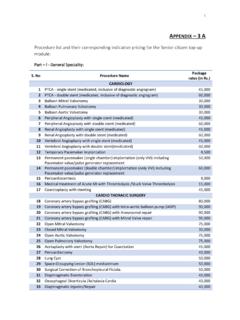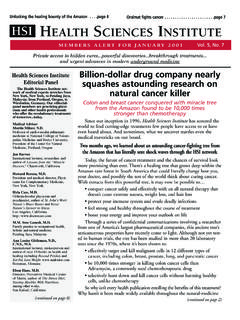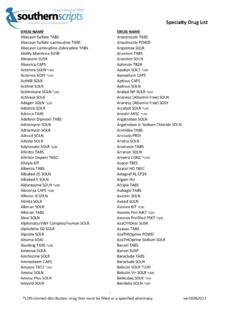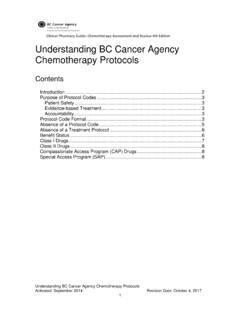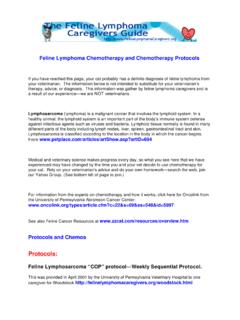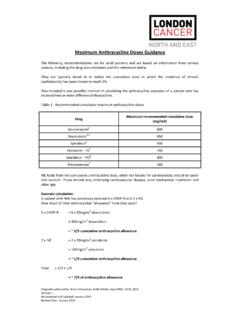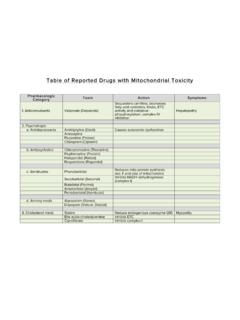Transcription of GRAVIOLA - Raintree Nutrition, Inc.
1 Technical Data ReportforGRAVIOLA(Annona muricata)All rights reserved. No part of this document may be reproduced or transmitted in any form or by any means,electronic or mechanical, including photocopying, recording, or by any information storage or retrievalsystem, without written permission from Sage Press, document is not intended to provide medical advice and is sold with the understanding that the publisherand the author are not liable for the misconception or misuse of information provided. The author and SagePress, Inc. shall have neither liability nor responsibility to any person or entity with respect to any loss,damage, or injury caused or alleged to be caused directly or indirectly by the information contained in thisdocument or the use of any plants mentioned. Readers should not use any of the products discussed in thisdocument without the advice of a medical professional.
2 Copyright 2005 Sage Press, Inc., Austin, TX 78708-0064. All rights from The Healing Power of Rainforest Herbs, by Leslie TaylorPublished and copyrighted by Square One Publishers, Inc, 2005 GRAVIOLAH erbal Properties and ActionsMain ActionsOther ActionsStandard Dosage kills cancer cells relieves depressionLeaves slows tumor growth reduces spasmsInfusion: 1 cup 3 times daily kills bacteria kills virusesTincture: 2-4 ml 3 times daily kills parasites reduces feverCapsules: 2 g 3 times daily reduces blood pressure expels worms lowers heart rate stimulates digestion dilates blood vessels stops convulsions sedatesFamily: AnnonaceaeGenus: AnnonaSpecies: muricataCommon Names: GRAVIOLA , soursop, guan bana, guan bano, guanavana, guanaba, corossol pineux, huanaba, toge-banreisi, durian benggala, nangka blanda, cachiman pineuxParts Used: Leaves, fruit, seeds, bark, rootsGraviola is a small, upright evergreen tree, 5 6 m high, with large, glossy, dark green leaves.
3 Itproduces a large, heart-shaped, edible fruit that is 15 20 cm in diameter and green in color, withwhite flesh inside. GRAVIOLA is indigenous to most of the warmest tropical areas in South and NorthAmerica, including the Amazon. The fruit is sold in local markets in the tropics, where it is calledgraviola in Brazil, guan bana in Spanish-speaking countries, and soursop in the United States. Thefruit pulp is excellent for making drinks and sherbets and, though slightly sour-acidic, can be eatenout of AND HERBAL MEDICINE USESAll parts of the GRAVIOLA tree are used in natural medicine in the tropics, includingthe bark, leaves,roots, fruit, and fruit seeds. Different properties and uses a re attributed to the different parts of thetree. Generally, the fruit and fruit juice are taken for worms and parasites, to cool fevers, to increasemother s milk after childbirth, and as an astringent (drying agent) for diarrhea and dysentery.
4 Thecrushed seeds are used against internal and external parasites, head lice, and worms. The bark,leaves, and roots are considered antispasmodic, hypotensive, and sedative, and a tea is made forvarious disorders toward those has a long, rich history of use in herbal medicine as well as a lengthy recordedindigenous use. In the Peruvian Andes, a leaf tea is used for catarrh (inflammation of mucousmembranes) and the crushed seed is used to kill parasites. In the Peruvian Amazon the bark, roots,and leaves are used for diabetes and as a sedative and antispasmodic. Indigenous tribes inGuyana use a leaf and/or bark tea as a sedative and heart tonic. In the Brazilian Amazon a leaf teais used for liver problems, and the oil of the leaves and unripe fruit is mixed with olive oil and usedexternally for neuralgia, rheumatism, and arthritis pain. In Jamaica, Haiti, and the West Indies, thefruit and/or fruit juice is used for fevers, parasites, and diarrhea; the bark or leaf is used as an2antispasmodic, sedative, and nervine for heart conditions, coughs, flu, difficult childbirth, asthma,hypertension, and , in the United States and Europe, GRAVIOLA is sold as a popular adjunctive naturaltherapy for cancer.
5 This use has stemmed from published research on GRAVIOLA and its naturallyoccurring chemicals possessing anticancerous actions, rather than its established traditional usesin South CHEMICALSMany active compounds and chemicals have been found in GRAVIOLA , as scientists have beenstudying its properties since the 1940s. Most of the research on GRAVIOLA focuses on a novel set ofchemicals called Annonaceous acetogenins. GRAVIOLA produces these natural compounds in its leafand stem, bark, and fruit seeds. Three separate re s e a rch groups have confirmed that thesechemicals have significant antitumorous properties and selective toxicity against various types ofcancer cells (without harming healthy cells). These groups have published eight clinical studies ontheir 8 Many of the acetogenins have demonstrated selective toxicity to tumor cells atvery low dosages as little as 1 part per million. Four studies were published in 1998 which furtherspecify the chemicals and acetogenins in GRAVIOLA that are demonstrating the strongestanticancerous, antitumorous, and antiviral 12 Annonaceous acetogenins are only found in the Annonaceae family (to which graviolabelongs).
6 These chemicals in general have been documented with antitumorous, antiparasitic,insecticidal, and antimicrobial Mode of action studies in three separate laboratories haverecently determined that these acetogenins are superb inhibitors of enzyme processes that are onlyfound in the membranes of cancerous tumor cells. This is why they are toxic to cancer cells buthave no toxicity to healthy cells. Purdue University, in West Lafayette, Indiana, has conducted agreat deal of the research on the acetogenins, much of which has been funded by The NationalCancer Institute and/or the National Institutes of Health (NIH). Thus far, Purdue University and/orits staff have filed at least nine and/or international patents on their work around theantitumorous and insecticidal properties and uses of these acetogenins. In 1997, Purdue University published information with promising news that several of theAnnonaceous acetogenins not only are effective in killing tumors that have proven resistant to anti-cancer agents, but also seem to have a special affinity for such resistant cells.
7 14 In severalinterviews after this information was publicized, the head pharmacologist in Purdue s researchexplained how this worked. As he explains it, cancer cells that survive chemotherapy can developresistance to the agent originally used as well as to other, even unrelated, drugs. This phenomenonis called multi-drug resistance(MDR). One of the main ways that cancer cells develop resistanceto chemotherapy drugs is by creating an intercellular pump, which is capable of pushing anticanceragents out of the cell before they can kill it. On average, only about two percent of the cancercells in any given person might develop this pump but they are the two percent that can eventuallygrow and expand to create multi-drug-resistant tumors. Some of the latest research on acetogeninsreported that they were capable of shutting down these intercellular pumps, thereby killing multi-drug resistant tumors. Purdue researchers reported that the acetogenins preferentially killed multi-drug-resistant cancer cells by blocking the transfer of ATP the chief source of cellular energy tumor cell needs energy to grow and reproduce, and a great deal more to run its pump andexpel attacking agents.
8 By inhibiting energy to the cell, it can no longer run its pump. Whenacetogenins block ATP energy to the tumor cell over time, the cell no longer has enough energyto operate sustaining processes and it dies. Normal cells seldom develop such a pump; therefore,they don t require large amounts of energy to run a pump and, generally, are not adversely affectedby ATP inhibitors. Purdue researchers reported that fourteen different acetogenins tested thus fardemonstrate potent ATP-blocking properties (including several found only in GRAVIOLA ).15 They alsoreported that thirteen of these fourteen acetogenins tested were more potent against MDR breastcancer cells than all three of the standard drugs (adriamycin, vincristine, and vinblastine) they used3as Annonaceous acetogenins discovered in GRAVIOLA thus far include: annocatalin,annohexocin, annomonicin, annomontacin, annomuricatin A and B, annomuricin A through E,annomutacin, annonacin, annonacinone, annopentocin A through C, cis-annonacin, cis-corossolone, cohibin A through D, corepoxylone, coronin, corossolin, corossolone, donhexocin,epomuricenin A and B, gigantetrocin, gigantetrocin Aand B, gigantetrocinone, gigantetronenin,goniothalamicin, iso-annonacin, javoricin, montanacin, montecristin, muracin A through G,muricapentocin, muricatalicin, muricatalin, muri-catenol, muricatetrocin A and B muricatin D,muricatocin A through C muricin H, muricin I, muricoreacin, murihexocin 3, murihexocin A throughC, murihexol, murisolin, robustocin, rolliniastatin 1 & 2, saba-delin, solamin, uvariamicin I and IV,and ACTIVITIES AND CLINICAL RESEARCHIn a 1976 plant screening program by the National Cancer Institute.
9 GRAVIOLA leaves and stemshowed active toxicity against cancer cells, and researchers have been following up on thesefindings Thus far, specific acetogenins in GRAVIOLA and/or extracts of GRAVIOLA have beenreported to be selectively toxic in vitro to these types of tumor cells: lung carcinoma cell lines;1,3 6human breast solid tumor lines;4 prostate adenocarcinoma ;9 pancreatic carcinoma cell lines;1, 9 ,12colon adenocarcinoma cell lines;1, 2, 12 liver cancer cell lines;17 20 human lymphoma cell lines;21 andmulti-drug-resistant human breast Researchers in Taiwan reported in 2003 thatthe main GRAVIOLA acetogenin, annonacin ,was highly toxic to ovarian, cervical, breast, bladder andskin cancer cell lines at very low dosages, saying annonacin is a promising anti-cancer agent andworthy of further animal studies and, we would hope, clinical trials. 23An interesting in vivo study was published in March of 2002 by researchers in Japan, who werestudying various acetogenins found in several species of plants.
10 First they inoculated mice with lungcancer cells. Then, one third received nothing (the control group), one third received thechemotherapy drug adriamycin, and one third received the main GRAVIOLA acetogenin, annonacin(at a dosage of 10 mg/kg). At the end of two weeks, five of the six in the untreated control groupwere still alive and lung tumor sizes were then measured. The adriamycin group showed a reduction of tumor mass over the control group but 50 percent of the animals had diedfrom toxicity (three of six). The mice receiving annonacin were all still alive, and the tumors wereinhibited by percent slightly better than adriamycin and without toxicity. This led theresearchers to summarize: This suggested that annonacin was less toxic in mice. On consideringthe antitumor activity and toxicity, annonacin might be used as a lead to develop a potentialanticancer agent. 24 Other studies over the years have validated some of GRAVIOLA s other uses in herbal early studies demonstrated that the bark as well as the leaves had hypotensive,antispasmodic, anticonvulsant, vasodilator, smooth-muscle relaxant, and cardiodepressantactivities in , 26 Researchers verified GRAVIOLA leaf s hypotensive properties in rats againin Several studies over the years have demonstrated that leaf, bark, root, stem, and seedextracts of GRAVIOLA are antibacterial in vitro against numerous pathogens,28 30 and that the bark hasantifungal ,31 GRAVIOLA seeds demonstrated active antiparasitic properties in a 1991study, which validated its long standing traditional use,3 2 and a leaf extract showed to be activeagainst malaria in two other studies (in 1990 and 1993).

